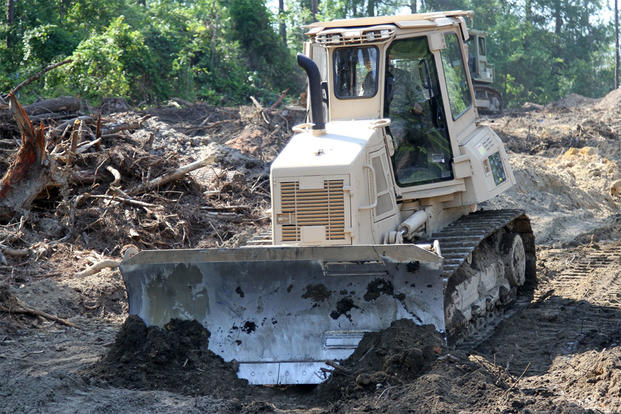AIKEN, S.C. — South Carolina Army National Guard engineers spent annual training, June 1-15, cleaning up old coal-fired ash and making a dramatic improvement on the local environment at the Savannah River Site (SRS).
Nearly 100 Soldiers from the 1782nd Engineer Company brought a variety of light and heavy equipment pieces to assist with cleaning up and improving the 13-acre area.
"The South Carolina National Guard has a long-standing relationship with SRS," said U.S. Army Lt. Col. Kevin Berry, 178th Engineer Battalion commander, out of Rock Hill, South Carolina. "But in the last few years, we have been trying to improve that relationship further. We have told them our capabilities and about a year ago, they decided that this would be a great mission for us to assist them with."
In the 1950s, nine powerhouses and steam plants were operating across the SRS. The coal ash was deposited into coal basins located near each powerhouse and steam plant. Cleanup of the coal basin mitigates risk to surrounding waterways.
The engineers used a variety of machinery to scrape and consolidate the coal ash into several large piles. They dug down and removed the ash until they hit soil. Then, the ash was put into several very large piles that will eventually be covered with a layer of soil.
"It's worked out," said Berry. "This is a six-stage project and we hope that we are going to continue to collaborate with SRS and have our Soldiers come out here to conduct annual training and continue the cleanup."
One of the main goals of the project is in trying to keep the ash from getting into waterways and making it to the Savannah River. When the engineers first arrived on site, they put up erosion control methods, silt fences, and then started removing stumps and roots left over from the cut and cleared trees that were previously removed. After being on site for just two days, the area was impacted with nearly five inches of rain.
"Fortunately, these guys did a great job of setting up the erosion control measures because shortly after we started, then the rain hit them," said Berry. "Those are things we can never predict."
Another challenge the 1782nd Soldiers had to overcome was the ash was spread over a larger area than originally thought and the conditions of the terrain.
"We've changed plans a couple of different times, but that is what is what we do as engineers," said Berry. "We have to assess a problem and then figure out a solution."
According to Sgt. First Class Stacy Jones, Training Non-Commissioned-Officer for the 1782nd, the unit is already looking ahead. "There are multiple opportunities we are discussing that would provide great missions for our engineers, including continuing this project next annual training," said Jones.




























